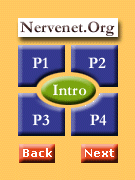| |
Measuring brain weight.
A simple analysis of differences in brain
weight among numerous strains of mice has been carried out in part as a
prelude to this program project. For the great majority of animals, we
now have information on sex, body weight, age, and type and quality of
fixation. Both sexes and a wide range of ages have been studied and
incorporated into the MBL. Perhaps the most remarkable aspect of the
data is that they reveal large differences in brain weight between
several substrains of mice that carry only modest genetic differences.
For instance, brain weights of BALB/cByJ and BALB/cJ mice differ by 76
mg. C57L/J and C57BL/6J differ by 88 mg. C3H/HeJ and C3H/HeSnJ also
differ by 88 mg. The closely matched differences in these three pairs
are tantalizing. Presumably, the differences are generated by a very
small number of polymorphic genesprobably one or two genes. Since
some of the parental strains were already fully inbred prior to being
split into substrains, it is unlikely that the variation is due to the
fixation of alternative alleles. Mutations or reversions are a more
likely cause of this remarkable substrain variation. Unfortunately these
large differences cannot easily be mapped because suitable polymorphic
marker loci for this type of analysis have not yet been developed.
However, comparative gene expression analysis (e.g., differential
display), subtractive hybridization, and candidate gene approaches might
be used to explore factors that contribute to these 80-mg differences.
In a standard mouse colony, variation in brain weight has a
heritability that ranges from 0.35 to 0.7 . The correlation between
values is a direct estimate of heritability in a narrow sense. Parents
and offspring in this case are seven sequential generations (F2
to G10)
of an advanced intercross between C57BL/6J and DBA/2J (G. Zhou and R.W.
Williams, in progress). This estimate of heritability is somewhat lower
than that found in most previous work, averaging 0.35 to 0.45 for
different datasets and crosses.
In comparison to brain weight, variation in neuron number has a
heritability of approximately 0.8 for granule cells in the dentate gyrus
and between 0.7 and 0.9 for retinal ganglion cells .
These values are sufficiently
high to motivate a QTL analysis.
|
|










